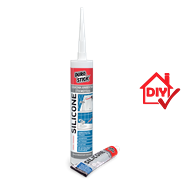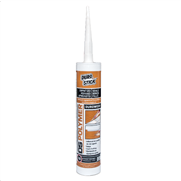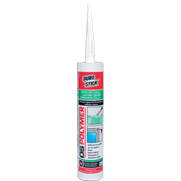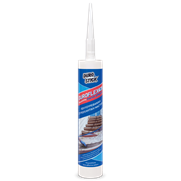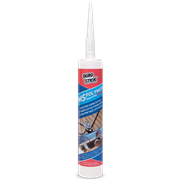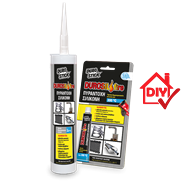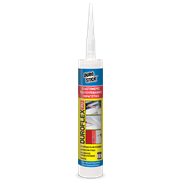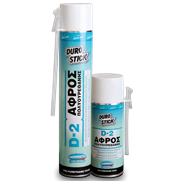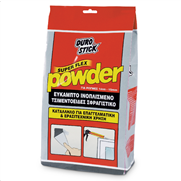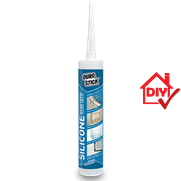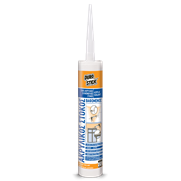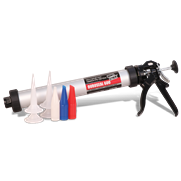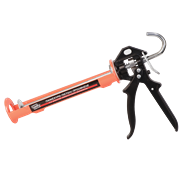- Technical Support
- Locate a store
building? maintaining? repairing? renovating?
the solutions are here!
SEALANTS
- TILE ADHESIVES & GROUTS
- WATERPROOFING PRODUCTS
- WATER REPELLENT PRODUCTS
- SEALANTS
- PLASTERS/RENDERS & REPAIR PRODUCTS
- PAINTS, UNDERCOATS & DECORATIVE PRODUCTS
- MICROCEMENT
- FLOORS & WALLS
- MULTI PURPOSE ADHESIVES
- PLUMBING PRODUCTS
- PRODUCTS FOR CLEANING & PROTECTION
- THERMOSEAL
- COOLROOF & COOLROOF LIGHT
- INNOVATIVE PRODUCTS
- NEW PRODUCTS
Select subcategory
- Silicone, polyurethane, acrylic and cementitious sealants
- Tools for installing sealants & water-proofers
SEALANTS
- Sealing joints and cracks
-
Why is it necessary to apply sealers on building structures?The construction of a building, among other things, requires fitting together different materials and creating joints at various junctions of the building surfaces. Additionally, different kinds of smaller or larger cracks are constantly forming due to manufacturing defects; temperature related expansions and contractions, as well as the effects of loads (weight) and stresses. It is also common to notice manufactured expansion joints become wider and expand further than designed (construction defect). Joints and cracks are usually penetration points for moisture through the building elements. The detrimental effect of moisture penetration is evident in walls, floors and ceilings (especially inside a building/structure), and include the degradation of the indoor microclimate quality. The damaging effects of the same moisture penetration might be slower to manifest, however, the results are more significant for the structure of the building. All of the above are just some of the reasons that make sealing of cracks and joints an absolute and immediate necessity for every structure and building, by always using the appropriate products.What are the benefits a building (or a building surface) gains by applying the necessary seals?The reason for sealing various, mainly outdoor joints and cracks on a building or a structure is to ensure that outdoor moisture will not penetrate into the wall surfaces and pass through it to the indoor space(s) of that building or structure. Joints such as the ones around door and windows casings, termination points of various linings or edges, expansion joints, around penetrations through linings (railing and pergola posts, equipment support structure penetrations etc.), perimeter termination points and joints between lining and skirting or wall etc. Cracks such as the ones noticed on wall surfaces (hairline or bigger), as well as various lining cracks on horizontal or vertical surfaces and linings. Some of the benefits for sealing cracks and joints are: Maintain the thermal conductivity of a wall and its insulation properties. Maintain the properties of the materials composing the wall(s) (the bonding strength of a product, which is limited and compromised in a wet environment). Avoidance of mold creation and appearance of black spots inside the building (usually). Also avoidance of flaking and disintegration of the paint, salt discharges through the mass of the concrete to the surface.What type of sealers are available to me? How can I choose the right product each time?Today in the marketplace one can find several types and kinds of sealers. The most common, in terms of the material from which they are composed, are acrylic, asphalt, cementitious, polyurethane and epoxy based sealants. In the category of sealers, one must include paints that have the ability to seal hairline cracks (usually elastomeric paints). DUROSTICK recommends its own line of sealants that covers all the sealing needs of a building or a structure. That sealant line includes the following: DUROSTICK SILICONE, for sealing joints in various materials, the acrylic sealants DS-POLYMER and DUROWOOD DS-POLYMER, the siliconized and paintable ACRYLIC CAULK for a wide range of applications especially before painting, DUROSIL FIRE the fire resistant silicone, DUROSTICK FIREPROOF the fireproof sealant for up to 1200o, the polyurethane elastomeric adhesives and sealants DUROFLEX PU and DUROFLEX PU MARINE, MS POLYMER MARINE elastomeric sealant, the cementitious sealants SUPERFLEX POWDER and D-66 REPAIR for crack and hole repairs, the highly flexible adhesive and sealant DUROFLEX POWDER, as well as D-2 polyurethane foam to name a few. Learn more about the types, applications, and how to use each one of the above sealants by visiting DUROSTICK at www.durostick.grWhere do I start from? What should I know and take into consideration before starting any sealing project?One must know that like any other construction application, the condition of the substrate (stable, clean, primed or soaked) is an unavoidable and necessary part of any successful application. The substrate has to be the starting point for any sealant application. One must also be sure that the appropriate sealant (compatible with the specific application), was selected and/or purchased. All compatible and appropriate applications and uses of the sealant must be described in detail in the specification text of the product, usually printed on its packaging. If the product does not carry any specification/application information try to avoid it. If you have doubts or reservations about the selection or the proper use of a product, please contact the Technical Support team. Please be advised, one also needs to ensure that the environmental conditions, during the application and even after it, is in conformity with the product instructions until the complete curing/solidification of the sealant.Can I do it myself or should I seek expert help (craftsman)?Yes, in most cases you can actually do it yourself, depending on your familiarity with the use of building materials and products. Read and carefully follow the application instructions found on the packaging of the selected sealant. One must also make sure that the product is the right solution for the sealing problem he/she is dealing with. If you still don't feel confident for the application or for the results, then consider it appropriate to seek the help of a professional (craftsman).How can I ensure a great outcome and its duration in time?Ensure the outcome by first choosing the appropriate and correct sealing product(s). Branded, certified products should be considered to have the quality required to ensure results which they claim they can achieve. Make sure the substrate is of appropriate condition for the application or, if need be, create those conditions. Carefully follow all the use and application instructions. Take into account the environment in which the sealant will be applied and remain during its life span.What do I do if the seal fails (detachment, cracking) and/or mold or black spots begin to form around the sealed area?Carefully remove the existing seal completely. Clean and disinfect the area using a bleach/water solution or by using DUROSTICK D-95 to remove any mold residues and microorganisms. Allow for the cleaner to act for a few minutes and rinse thoroughly. Assuming you chose the right sealant, and you adequately familiarize yourself with the application method, proceed to reseal the area.Does the color of the sealant matter?Most sealants are usually white, off-white or gray. However, in many instances the sealing points or joints are located in an environment with color(s), and the lining elements themselves are from a specific material (wood, stone, tile etc) which are usually of color(s) as well. For those situations and mainly for aesthetic reasons, choose colored or paintable sealants (DUROSTICK DS -POLYMER (32 colors), DUROWOOD DS-POLYMER (10 wood colors).When I am sealing a crack, how will I know if I am just repairing a minor problem or I am just covering up a major one that could develop into a big problem in the future?The major and most important difference when one examines one or more cracks on a building surface is whether the crack occurs on a load bearing element of that building or not. Cracks on load bearing elements may even affect the stability of the building and for that reason they should be treated with extreme caution, and when possible to be examined by specialists (engineers). Those cracks are not always visible to the naked eye, especially on surfaces that are lined in layers/coats (plastered or tiled surfaces). Those types of cracks might begin at the surface and extend deep into the structure element. This is one of the reasons that it is considered common practice and almost required to 'open up' (widen) the crack to see how deep does it go. Depending on the findings, plan the appropriate and safest way possible to repair the crack(s). Continue by select the repair product. For crack repairs on load bearing elements, the products that are used most often are epoxy based sealants. Those types of sealants are applied with a specialized procedure and for this reason, it would be advisable for such a repair to be carried out by professional specialists and in any event, after consultation with an engineer.What kind of support does DUROSTICK provide before, during, and after the purchase of its sealing products?DUROSTICK is next to you, from the initial stages of looking and finding/discovering your own personal solution(s), the selection and purchase of the appropriate, for each case, products, but also during the application steps and beyond. Our Technical Support Team via phone, e-mail, special applications, and mobile app support, is available and at your disposal 24/7. We are next to you, by making our vast information, knowledge and experience available to you in print and digital format. We are next to you with educational videos for the correct and proper use of a variety of our products. All of the above are available for you, at our points of sale and of course on the Internet, and even by mail.

